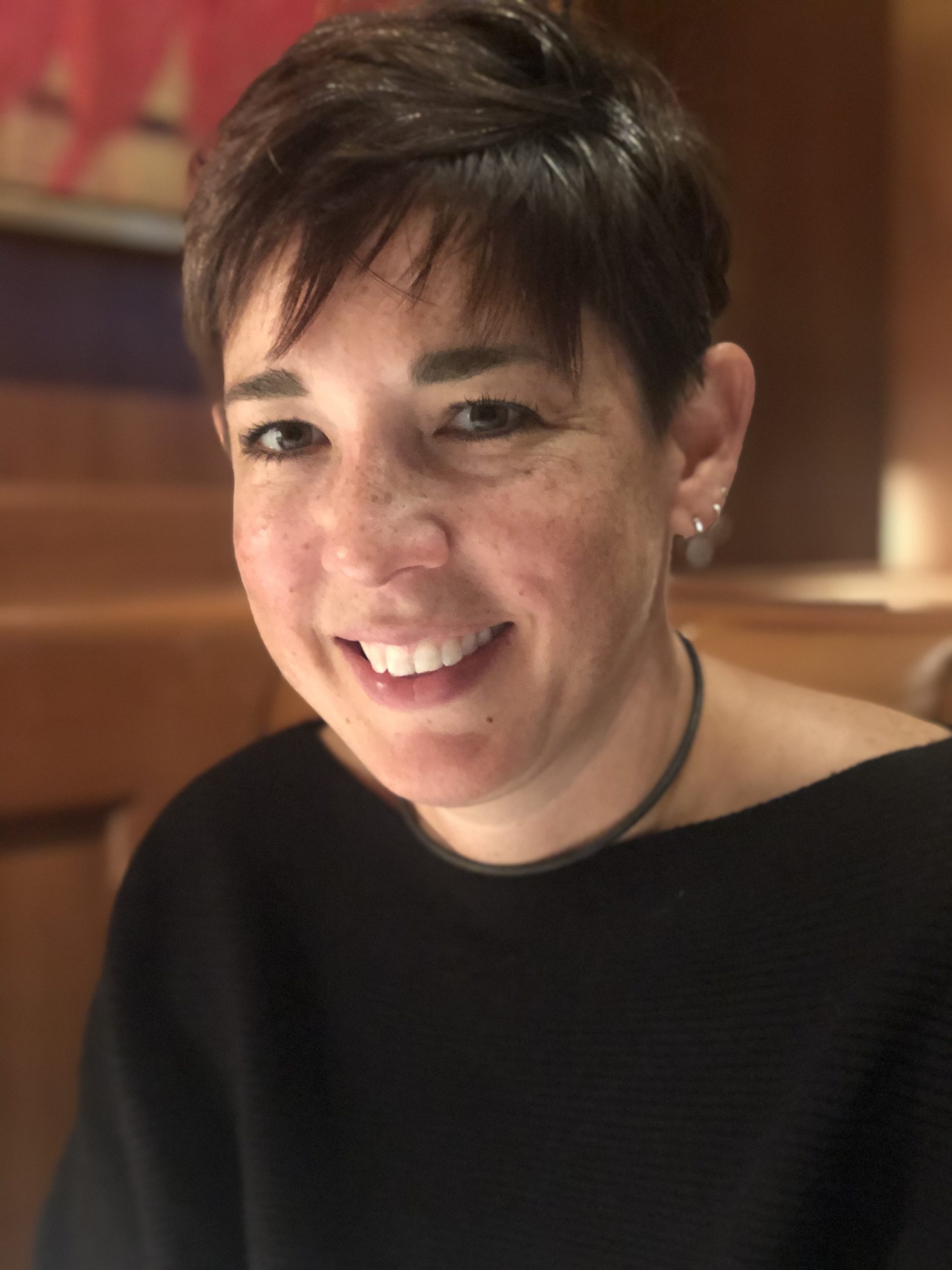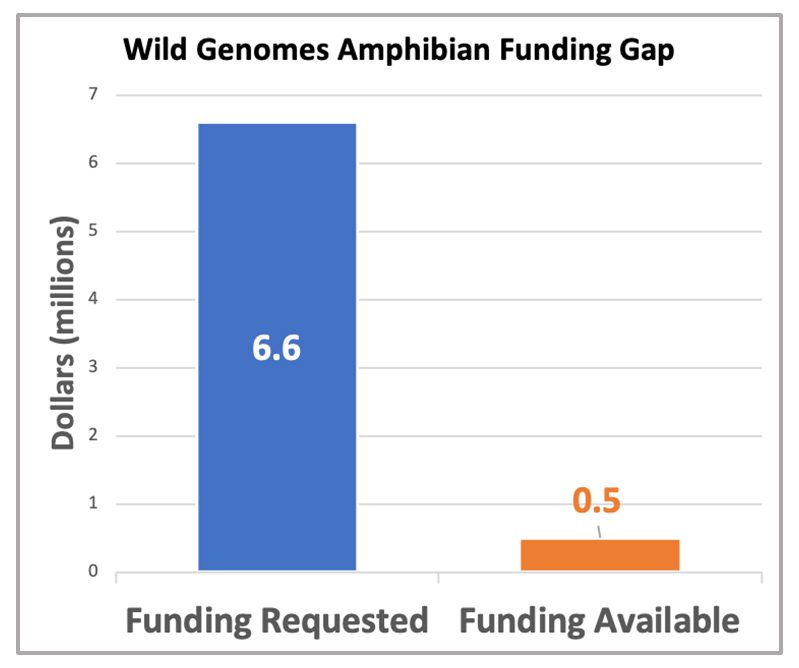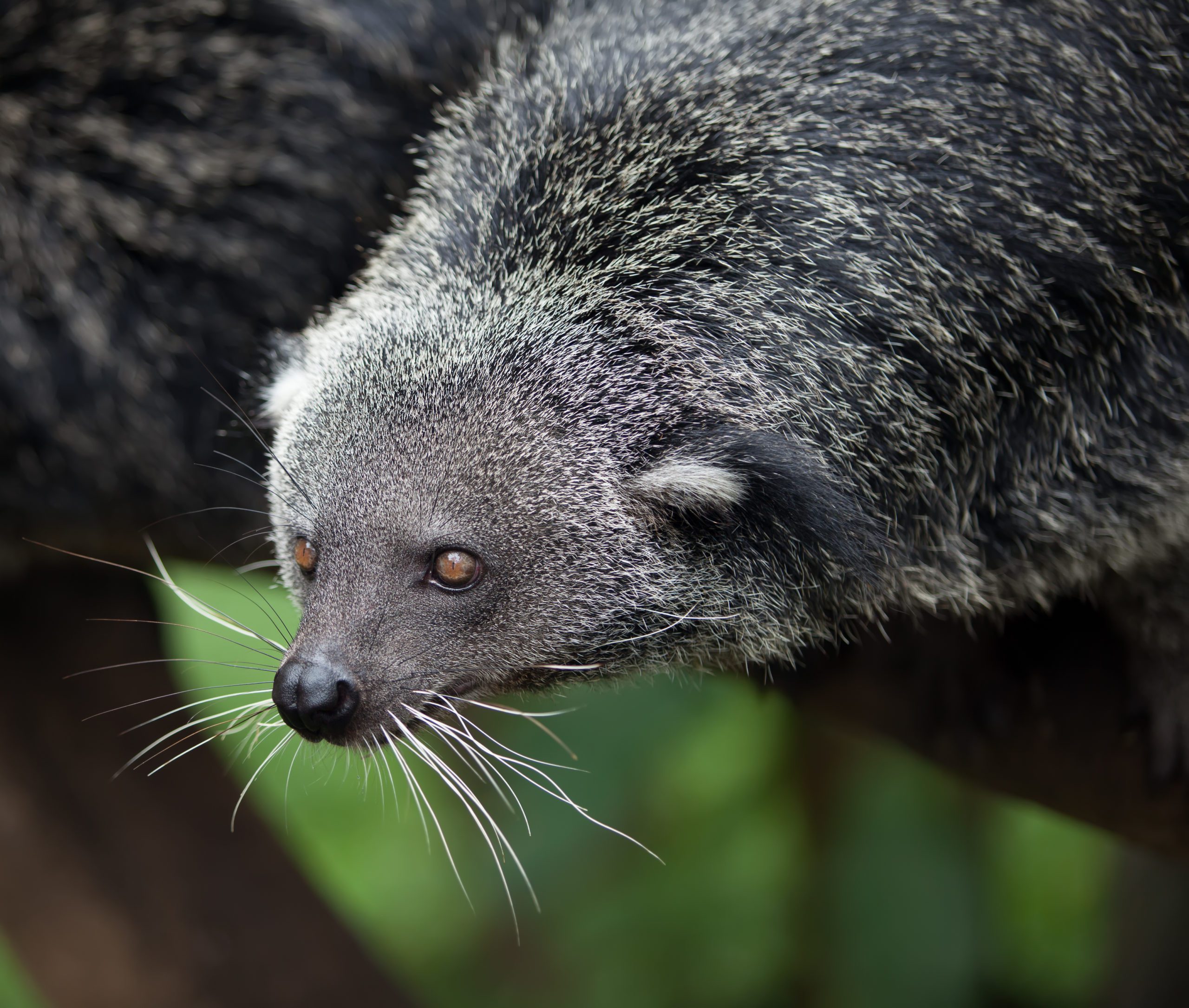
Revive & Restore is reimagining a future for all of us, and to get there we must invest in innovative technologies. This year, we accelerated the use of biotechnology in wildlife conservation by facilitating partnerships, advancing technology solutions, and funding high-impact conservation research – all to build a better future for wildlife.
You can be a part of the solution to save our world’s species by supporting our work today. Together, we will hit the ground running in 2023.
With all of my gratitude,

Ryan Phelan
Executive Director & Co-Founder, Revive & Restore
WHAT WE’VE ACHIEVED SO FAR
Our Impact by the Numbers
-
50+ SPECIES are the focus of our GENETIC RESCUE TOOLKIT
-
40+ HIGH-IMPACT RESEARCH PROJECTS FUNDED
-
15+ REFERENCE GENOMES CREATED FOR SPECIES RECOVERY
-
5+ MAJOR RESEARCH PROGRAMS LAUNCHED
-
$8+ MILLION AWARDED TO CONSERVATION PROJECTS

An endangered black-footed ferret (Mustela nigripes). In 2022, we were awarded a grant from the USFWS for research on genetic interventions for sylvatic plague. This is the first USFWS grant to leverage synthetic biology techniques for potential use in an endangered species.
Why this work matters
Genetic rescue has the power to improve conservation outcomes, both now and in the future.
What We Do
Connect | Advance | Fund
The Revive & Restore mission is to enhance biodiversity through the genetic rescue of endangered and extinct species. To do this, we act as a catalyst in three distinct roles:
- CONNECT – We connect a global network of science, conservation, and genetic technology experts. Together, we establish priorities and opportunities for biotechnology to make a difference in wildlife conservation.
- ADVANCE – We identify conservation challenges where biotechnology can bring innovative solutions. By working with research partners, we co-create new tools for conservation.
- FUND – We fund transformative, early-stage bioscience research and proof-of-concept projects that can be applied to high-value, high-impact wildlife conservation challenges.

Partnerships are the key to our success. Photo features working group participants at the Genomics Solutions Workshop (pre-COVID days).
Thoughts from a new donor:
“In a world filled with challenges, I’m inspired by organizations that bring hope, optimism and solutions. And that’s YOU — Revive & Restore.
Learning how to leverage biotechnology for conservation is a crucial capability for humanity to survive and thrive. I’m grateful that you’re helping lead the way.”
CHRISTOPHER MICHEL
Recent Donor to Revive & Restore

Christopher Michel
(Artist-in-residence, National Academy of Sciences)
Biotechnology for Bird Conservation
The reproductive biology of birds makes it difficult to apply key technologies used for genetic rescue in mammals such as in vitro fertilization and cloning. To overcome this challenge, we launched the Biotechnology for Bird Conservation Program.
Impact Highlights this Year:
- We raised over $5 million for the Biotechnology for Bird Conservation program.
- We launched this program with a call for proposals to develop reproductive and gene-editing methods tailored to enable new tools suited for the unique biology and conservation demands of birds.
- As a result, we selected 8 proposals led by scientists in the U.S., Germany, Korea, and Japan, building new tools for diverse birds ranging from cockatiels to peacocks. Research is now underway.
BIOTECHNOLOGY FOR BIRD CONSERVATION: 2022 AWARDED PROJECTS
There are over 10,000 species of birds. That much biodiversity requires a diversity of technologies. That’s why we’re not only translating existing technologies from domestic poultry to wild birds but innovating completely new tools for birds to enable many conservation approaches. The 8 awarded scientists listed below are leading teams working toward such innovations in four different program tracks.
Program Track 1: Culturing Avian Germ Cells for Reproduction
Erich Jarvis
Rockefeller University
USA
Michael Liers
Universität Giessen
Germany
Yoshiaki Nakamura
Hiroshima University
Japan
Program Track 2: Avian Stem Cells for Reproduction
Guojun Sheng
Kumamoto University
Japan
Qilong Ying
University of Southern California
USA
Program Track 3: In Vivo Gene Editing
Jae Yong Han
Seoul National University
Korea
Program Track 4: Sterile Surrogates for Reproduction of Donor Cell Lines
Kichoon Lee
Ohio State University
USA
Rusty Lansford
University of Southern California
USA

Japanese Quail (Coturnix japonica)

“Humanity’s love of birds inspired the modern conservation movement. Over a century later, many birds face threats only biotech can solve. We’re developing tools that can change the future for birds.”
BEN NOVAK
Lead Scientist and Program Manager for Biotechnology for Bird Conservation, Revive & Restore
Wild Genomes Project
Wild Genomes accelerates the adoption of genomic sequencing for applied wildlife conservation. Through our portfolio of projects, we provide state-of-the-art genomic tools to the people who need them most: field scientists, wildlife managers, and citizens working to protect their local biodiversity.
Impact Highlights this Year:
- We developed a new partnership with the Morris Animal Foundation. This led to two new Wild Genomes initiatives: one for kelp ecosystems and one for amphibians.
- We received 38 applications to our Wild Genomes Amphibians program, from applicants spanning 13 countries.
- We opened our call for proposals for the Kelp Ecosystems topic in October 2022. We will begin selecting applicants in 2023.
Demand outpaces our ability to fund
We received proposals from a wide range of countries, achieving broad international reach. However, we are limited by our ability to fund only a fraction of these amphibian genomics projects. More funding is needed to support these important projects for critically endangered amphibian species.

In 2022, we received Wild Genomes Amphibians proposals from 38 researchers across 13 countries. This call produced our most geographically diverse response yet.
Demand for genomic tools continues to outpace our funding. Please consider donating today:

“Genomics offer insight that can help wildlife managers make more informed decisions. The Wild Genomes Program provides genomic tools to people working to protect their local biodiversity.”
BRIDGET BAUMGARTNER
Director of Research & Development and Program Manager for Wild Genomes, Revive & Restore
Informed Biobanking
In partnership with the US Fish & Wildlife Service (USFWS), Revive & Restore is forging a path to enable the genetic rescue of US endangered species. Our goal with Informed Biobanking is to cryopreserve samples from all US endangered species, making biobanking standard practice in conservation.
Impact Highlights this Year:
- We developed a biobanking pipeline for cell culturing with the San Diego Zoo Wildlife Alliance and ViaGen.
- We laid the groundwork for a biobanking pilot program with the USFWS. The pilot will biobank and sequence genomes from 10 endangered species in the US Southwest.
- We compiled standard protocols for tissue collection, starting with mammal species.

“Biobanking gives us the chance to save irreplaceable genetic diversity. If done right, it creates a marker-in-time and gives future recovery biologists options, like genetic rescue, that are only possible if we act now!”
SETH WILLEY
Deputy Assistant Regional Director, Ecological Services
US Fish & Wildlife Service
Black-footed ferret rescue
Since 2013, Revive & Restore has been working to develop solutions to the threats challenging the future of the endangered black-footed ferret: low genetic diversity and sylvatic plague. In 2022, with funding from the US Fish & Wildlife Service and Morris Animal Foundation, we’ve launched two cutting-edge projects to address both threats.
Impact Highlights this Year:
- We were awarded a Recovery Challenge grant from the USFWS, for foundational research on genetic interventions for sylvatic plague. This is the first USFWS grant to leverage synthetic biology techniques for potential use in an endangered species.
- Our collaborator, Dr. Kamila Mustafina at Massachusetts Institute of Technology, is pursuing a synthetic biology approach to creating genetic vaccines against sylvatic plague that can be inherited through the germline.
- We’ve scoped a project to develop a gene editing technique that would enable lost genetic diversity to be added back to the black-footed ferret gene pool, in collaboration with Dr. Jef Boeke at New York University.

“We are building upon the foundational success of ‘Elizabeth Ann’. We are excited to continue restoring genetic diversity in her species and developing lasting solutions to sylvatic plague.”
PETE MIRAGLIA
Deputy Director, Revive & Restore
Advanced Coral Toolkit
Coral reefs are some of the most diverse ecosystems on our planet, but over 50% of the world’s corals have already been lost with as much as 90% loss projected by 2050. The Advanced Coral Toolkit supports the development and fielding of new biotechnologies that benefit coral resilience and restoration efforts.
Impact Highlights this Year:
- Thanks to a generous grant from Oceankind in 2022, we’ve extended the Advanced Coral Toolkit another 3 years.
- In partnership with scientists at the Smithsonian Conservation Biology Institute and University of California – Berkeley, we’ve demonstrated that coral fragments can be frozen and thawed by isochoric freezing techniques, opening up the potential for large scale coral biobanks.
- We’ve shown that coral stem cells can be isolated from a donor coral and transplanted to a recipient coral, in partnership with scientists at the University of Miami and Ben Gurion University.
- In partnership with scientists at Rutgers University, we’ve developed a method for detecting metabolic signatures of coral stress for use in field surveys.
Revive & Restore
relies on the generosity
of individuals like you
Please consider making a tax-deductible donation today.
Via Check to
Revive & Restore
1505 Bridgeway, Suite 203
Sausalito, CA 94965
Revive & Restore is a 501(c)3 non-profit
Charity Navigator Score 100
★★★★
THANK YOU
for helping us turn the tide on species loss











